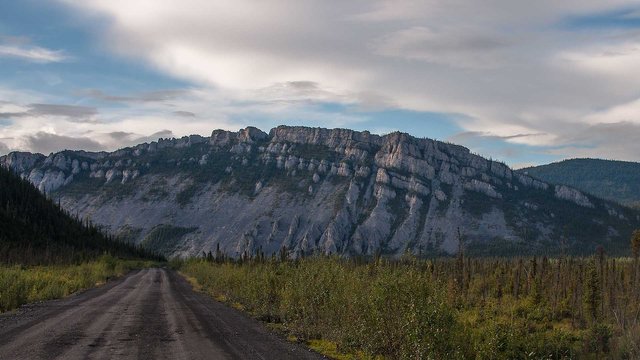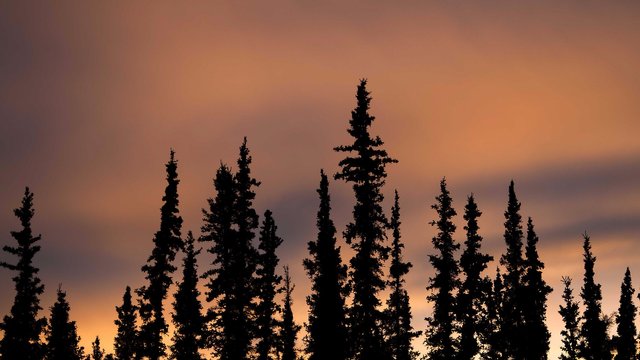Landscapes - 5 Lessons to take compelling pictures of the world around you
The following is a quick lesson on taking compelling landscape shots with minimal gear.

Landscape photography is deceptively hard to master. Sure, it may seem easy. You may think that all you really need is a nice view and a camera. Landscapes don't move, so if you need more light you put the camera on a tripod and keep the shutter open longer. There's always a landscape to shoot, wherever you are. And giant swathes of land are often so spiritually uplifting when seen in person, you're sure if people see even a fraction of what you do they'll be in love with your shot.
But the reality is great landscapes are a challenge. Landscapes don't move, so there's no action to make your shot innately interesting**. Landscapes are everywhere, so the world is overrun with landscape shots, making it hard for yours to stand out. And often the perspective of your shot is so limited that you can't even capture a fraction of what you see in person. This is especially true for those just starting out in the photography world, who have little to no gear.
However there is hope. All of these challenges can be overcome with a little creativity and knowledge. And unlike architectural photography, you won't need lenses that costs as much as a Tesla. They'll help of course. But you definitely don't need them.
#1 - Perspective

So you're coming around a bend in the road and all of a sudden you're hit with the sight of a majestic mountain range. It's so fraught with notions of adventure and intrigue you can't help but pull over immediately and take a photo. But alas, your little 35mm just doesn't capture the majesty of what you're seeing. The mountains look small and pithy. There's nothing that gives them grandeur. Deflated, you start heading back to your car.
But wait! Don't go yet. Perhaps there's a way to give some perspective of those mountains. Really give the photograph a sense of how much those mountains mean to you. You don't need a wide angle lens to do this. All you need is to give those mountains some context.
One of the easiest ways to do this is by using a foreground object. Foreground objects are the parts of a picture set in the very front of your picture. They are used to give a sense of place and context to pictures. In the above photo I crawled into a ditch and shot up at the mountains behind some flowers. And while I wasn't able to really capture the majesty of those mountains, I think I created a compelling landscape shot none-the-less. In this case by offering viewers a unique perspective.
#2 - Go Vertical

Not all landscape shots need to be wide-angle masterpieces. Sometimes you have to turn that camera over and shoot up. If you're able to highlight a unique aspect of something, such as a lone mountain or tree, you can create some really cool images. In the above I took a wide shot of mountain range on the coast of Alaska, however I realize quickly that the most interesting thing about it was this awesome waterfall cutting through it's middle. It should be noted that this photo would be a lot more interesting had I managed to get the top of that mountain, but hey, we're working with what we have.
#3 - Use the light

One thing most pro landscape photogs tell you is that you have to know everything you can about the area you're shooting. What does it look like in the morning? Where does the sun sit in july? Should I shoot this in overcast skies, or is direct sunlight better? Well, direct sunlight is usually not the best, as the bright light tends to wash out images and make them look flat. If you're shooting outdoors and not trying to capture blue skies, a slightly overcast day is often the best, as it provides even light and makes colours pop.
However when you just have to have that blue sky there's a few things you can do to help your photographs along. One would be to buy a neutral density filter. ND filters are just a piece of glass that goes over your lens and darkens exposure. They can be picked up for very cheap. However if you don't have the means, consider what the sky is doing for you. In the above photo there's a smattering of cloud shadows over the mountain that help make it interesting. Ansel Adams, a famous black and white photographer, once sat for over 14 hours looking at clouds, trying to get the right combination of light and dark. He thought that black and white photography was better when it employed as many different shades of grey (from black to white) as was possible. The photo above is made better because it tries to do the same, even in colour. You have almost everything there on the grey scale from light to dark, and it help make a compelling image.
4 - Using patterns

Geometric patterns are one of the most pleasing things for humans to looks at. In the words of Alan Watts "Humans love strait lines". They are a symbol of our triumph over nature. Everywhere you look, humans apply the concepts of pure geometry to the things they create. Buildings, dishes, vases.... The list goes on.
Noticing these things in nature can lend a subtly pleasing aspect to your photography. Consider the image above. How many shapes do you notice in it? What sort of feeling do you get when looking at it. Does the mountain appear as though it is thrusting itself out of the ground, and if yes, why do you think that is?
My own take is that the perspective of the road, along with the slice of forest on the right contrasts with the curvature of the mountain range, making it look more alive than the things around it.
5 - If all else fails...

Sometimes, no matter how hard you try, you just can't capture the feeling of something in a photograph. In that case it may be time to break out of the objective and go abstract. Great, sweeping photographs can evoke strong emotions, but occasionally it's necessary to try and cultivate those emotions through your own subjective interpretation of what's taking place.
In the above photo I chose to crop out a small section of trees from a landscape, and use them as the focal point of my shot. The original photo I took just wasn't doing the scene justice, and I realized it was because there was just too much going on. By cropping the photo down, I was able to focus your attention on the intricate details in the branches of trees, and hopefully give you a better appreciation for the fantastic colour of the sky behind them.
Thank you for checking out this post. If you enjoyed it and want to see more, you can visit me @catharcissism and click the follow button. I spend most of my time talking about photography, poetry, and media.
*These photos originally taken by me for Yukon, North of Ordinary
Very long text is in the post. But maybe it is helpful for somebody.
Too much for you to read?
Yes. So many different letters....
YEah, I'm a bit sick and didn't spend much time editing. I apologize. Here's the 5 tips in short form
Try different perspectives. Get on the ground, climb on a ladder, etc. This can help give a sense of context to otherwise flat images.
Sometimes it better to turn your camera sideways.
Pay attention to light and shadow and how they influence how the picture looks.
Use natures patterns
Don't worry about what you see, try making something abstract with nature
Thank you. I'll try to follow your tips. Have a good time.
Thank you for taking a look. Have a great day.
The amount of text is fine. I liked your post, both photos and writing. Very helpful.
Thank you! I noticed that they're from Ukraine, so I tried to help out a little.
I'm glad to know you appreciate it.
I think you did well with your tl;dr version also :)
But just wanted to show some appreciation for the effort you put into the whole post.
It makes the whole thing worth it. I'd happily exchange every upvote for a comment. When I'm not half asleep I'm going to give your fiction a good going over. Where should I start?
Nesting wont let me reply to your last post - I understand and agree completely about comments. They do make all the difference. I always appreciate when people take time out to leave a reply. So I'm happy to notice your post and leave a comment.
As for my fiction, here is a link to my latest episode of Bad Trip. At the very bottom you will see links to earlier episodes, if you have the time and inclination. I do have single post stories from way back, but would take some scrolling on my page to find them!
https://steemit.com/fiction/@naquoya/original-fiction-bad-trip-part-11-enter-the-maze
And thanks for the follow, will happily to reciprocate.
Great post!
Thank you!